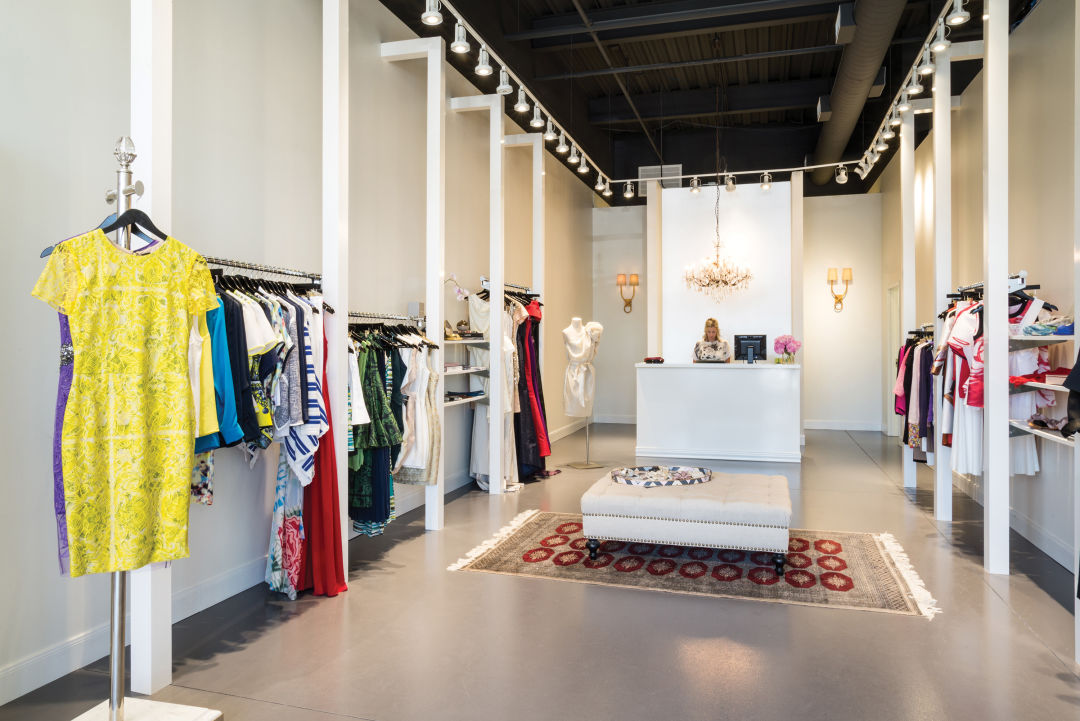The Rise of Online Shopping: Searching For Boutique Fashion at Your Fingertips
The Rise of Online Shopping: Searching For Boutique Fashion at Your Fingertips
Blog Article
Lasting Fashion: Exactly How Eco-Friendly Clothing Is Forming the Future of Design
As the style sector faces boosting analysis over its environmental influence, the increase of lasting fashion uses an encouraging choice that lines up design with eco-friendly duty. boutique fashion. How does this activity genuinely influence the future trajectory of style, and what challenges lie in advance in its widespread fostering?
Cutting-edge Sustainable Products
As the style sector grapples with its ecological influence, ingenious sustainable products have arised as a crucial option for minimizing environmental impacts. These products not just lower reliance on fossil fuels however also reduce damaging chemical use and water usage.
In addition to plant-based products, developments in biofabrication have led to the development of lab-grown fabrics. Mycelium natural leather, obtained from mushroom origins, presents a versatile and naturally degradable option to animal natural leather. Its manufacturing results in substantially reduced carbon exhausts and water usage, making it a much more lasting alternative for stylist seeking to line up with environmentally friendly techniques.
Recycled products are also gaining grip, with polyester made from recycled plastic containers standing for a considerable innovation. This innovation not just diverts plastic waste from land fills and seas but additionally lowers power usage contrasted to creating virgin polyester. Together, these products emphasize the potential for a much more lasting fashion business, leading the method for eco mindful design and manufacturing.
Eco-Conscious Manufacturing
Building on the innovations in lasting products, the garment industry is also re-evaluating its production procedures to even more lower ecological influence. Key methods consist of reducing water usage, lowering carbon exhausts, and removing harmful chemicals. By embracing closed-loop systems, producers aim to reuse water and power effectively, substantially decreasing waste. The assimilation of sustainable energy sources, such as solar and wind power, right into manufacturing facilities further cuts dependence on fossil fuels.
One more vital aspect is the reduction of poisonous chemicals generally used in dyeing and ending up fabrics. Eco-conscious manufacturers are changing towards plant-based dyes and waterless dyeing modern technologies, which not only safeguard neighborhood environments however additionally improve employee safety. Innovations like digital printing lower fabric waste and energy intake, using a cleaner alternative to traditional approaches.
With the advancement of blockchain technology, business can now provide in-depth understandings right into their supply chains, ensuring honest and ecologically pleasant methods at each step. As the demand for eco-conscious items grows, makers are urged to introduce, ensuring that the future of fashion is both stylish and sustainable.
The Increase of Upcycling
Upcycling, a transformative practice in lasting fashion, involves creatively repurposing thrown out products into new, high-quality products. This innovative strategy not just reduces waste but likewise diminishes the demand for raw materials, therefore minimizing the ecological influence of garments production. By reimagining and reconstructing existing products, developers and fashion brand names have the ability to instill originality right into their collections while promoting environmental obligation.

Additionally, the upcycling motion has empowered boutique fashion tiny services and independent developers, who usually lead in advancement due to their agility and creativity. By profiting from the plentiful availability of extra products, these entities add to a round economic situation, demonstrating that fashion can be both trendy and lasting. Via upcycling, the market takes substantial strides in the direction of a more aware and accountable future.
Thrift Culture's Impact
The blossoming thrift society considerably improves the landscape of sustainable style, highlighting the importance of conscious consumption. This social change motivates customers to accept pre-owned garments, thereby minimizing the demand for new garment manufacturing and reducing ecological impact. Second hand purchasing not only expands the lifecycle of clothing however additionally reduces the carbon impact connected with manufacturing, transporting, and taking care of apparel.
A crucial aspect of thrift society is its democratization of style. By offering a broad variety of designs from various ages at affordable prices, thrift shops make style accessible to a wider target market. This access fosters a sense of originality you can try here and creative thinking, as consumers mix and match distinct items to curate tailored wardrobes without contributing to the quick fashion cycle.
Moreover, thrift society advertises circularity in style, lining up with the principles of a circular economic situation. As even more developers and customers accept thrift society, the style market is obliged to adapt, incorporating lasting methods to meet the expanding need for eco-conscious options.

Future Trends in Style
Fashion's advancement is progressively shaped by technical innovations and sustainability-driven campaigns. As customers end up being extra ecologically aware, the market is reacting with groundbreaking developments that redefine the future of design. One popular fad is the rise of electronic style, where online garments can be put on in augmented truth environments, substantially lowering fabric waste. This change not just caters to the digital-savvy customer yet also lessens the ecological footprint generally related to garment production.
Additionally, the assimilation of blockchain innovation supplies new possibilities in transparency and traceability, enabling consumers to confirm the sustainability qualifications of their apparel. boutique fashion. This makes certain accountability in supply chains and promotes ethical sourcing practices. 3D printing is yet another development that promises to transform producing processes by allowing on-demand production, thus decreasing excess inventory and waste
As these innovations mature, they are positioned to change the fashion landscape, combining design with sustainability. The future of fashion, therefore, exists in a seamless blend of technology, technology, and eco-friendly obligation.
Conclusion
The makeover of the fashion market via sustainable methods shows a critical change in the direction of environmental responsibility. This advancement not only lines up style with ecological sustainability however likewise establishes a precedent for future trends concentrated on duty and innovation.
As the fashion market encounters increasing scrutiny over its environmental effect, the surge of lasting fashion provides an appealing choice that straightens design with ecological responsibility.As the fashion market grapples with its ecological effect, cutting-edge lasting products have actually emerged as a vital option for lowering ecological footprints. Together, these materials underscore the potential for a much more lasting fashion industry, paving the means for environmentally conscious design and production.
Structure on the innovations in lasting products, the style sector is additionally re-evaluating its production procedures to additionally minimize environmental influence. boutique fashion.Upcycling, a transformative method in lasting style, involves creatively repurposing disposed of products right into new, premium items
Report this page